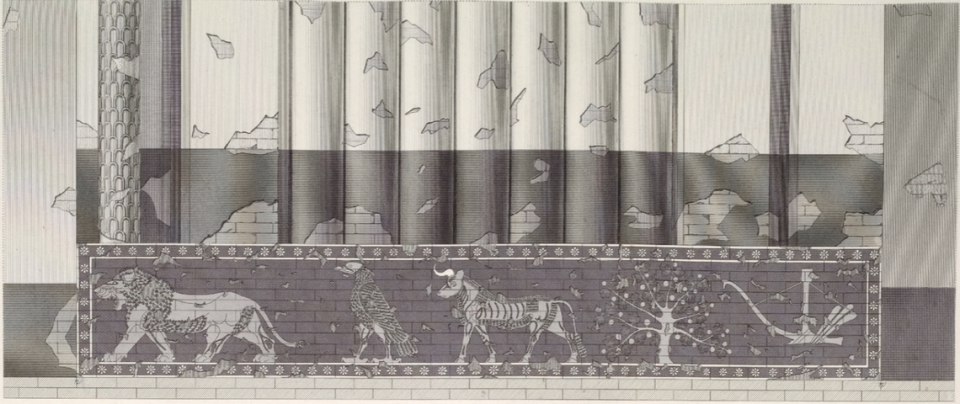Mysterious symbols from ancient Iraq temple baffled researchers for years — until now
For over 100 years, archaeologists have been flummoxed by a set of symbols discovered at an ancient temple in Iraq — until now.
An expert on Mesopotamia says he has decoded the symbols, revealing a “clever” double entendre, according to an article published in the Bulletin of the American School of Oriental Research.
The sequence of symbols — a lion, eagle, bull, fig tree and plough — was found etched into Assyrian temple ruins in the ancient city of Dūr-Šarrukīn, located in present day Khorsabad, Iraq.
Uncover more archaeological finds
What are we learning about the past? Here are three of our most eye-catching archaeology stories from the past week.
→ Massive 2,200-year-old tomb with grand interior unearthed in China
→1,000-year-old weapon — the first of its kind — found sticking out of grave in Spain
→ Workers unearth steelworks at medieval castle in UK — and find someone's 'hidey-hole'
The temples were constructed during the reign of King Sargon II, which spanned from 721 to 704 B.C., making them over 2,700 years old.
The etchings, comparable to Egyptian hieroglyphs, have been subject to various interpretations over the past centuries.

A 19th century scholar presumed they were nothing more than meaningless, aesthetically pleasing designs, while more recent scholars have taken them to be representations of gods.
But Martin Worthington, an Assyriologist at Trinity College Dublin, believes these interpretations do not tell the full story.
In the article, he contends that the symbols contain the sounds that “spell out” King Sargon II’s name.
“If one takes Sargon’s ‘mystery symbols’ and considers the Babylonian/Assyrian words which they represent, we end up with a sequence of words that include sounds spelling out ‘sar(ru)gin(u)’...” Worthington writes.
Further supporting this claim is the fact that the shortened version of the sequence, also found at the temple, also spells out the king’s name.
But in addition to his name, the symbols can also be interpreted to represent specific constellations in the night sky, Worthington said.
Some are familiar to modern humans, including Leo, signified by the lion and Taurus, signified by the bull. The lesser known constellations of Aquila, Jaw and Apin are also represented.
All five constellations “have associations which would have befitted an Assyrian king” since they are situated near stars associated with gods, Worthington said.
“The effect of the five symbols, was to place Sargon’s name in the heavens, for all eternity — a clever way to make the king’s name immortal,” Worthington said in a university news release. “And, of course, the idea of bombastic individuals writing their name on buildings is not unique to ancient Assyria…”
In addition, the constellations in question are visible in the night sky at various points throughout the year, meaning the king’s name “is always there above us.”
Still, Worthington notes, his decoded message is not the only possible interpretation — and past interpretations could still have merit.
Ancient scroll charred by volcanic eruption reveals what Plato did in his final hours
Medieval pottery workshop — with pieces still in the oven — found in France. See it
Archaeological site robbery report leads to ancient discoveries in Peru, officials say

